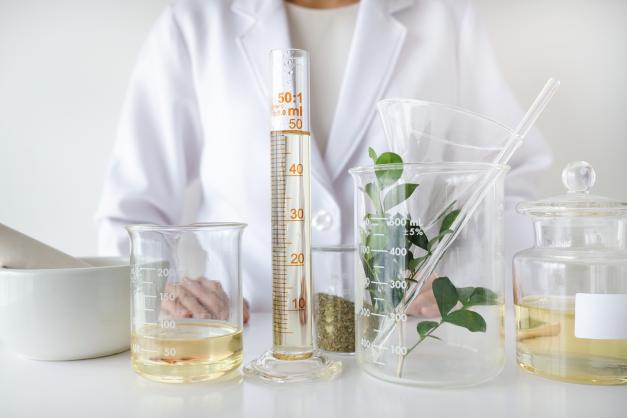
The use of the terms "natural" and "synthetic" to describe cleaning products has led to some confusion among consumers. The best advice is to avoid making assumptions about safety or performance based on a "natural" label alone.
What do the terms "synthetic" and "natural" really mean?
Consumers should be wary of the term "natural" when used to describe cleaning products. All of the chemicals used to make the ingredients that go into cleaning products are found in nature. Very few chemicals extracted from plants or the earth are used without further processing to obtain ingredients that perform a cleaning function. Thus, the term "natural" to describe a final product can be misleading.
For example, claims for "natural" cleaners usually refer to the surfactant, the product's primary cleaning ingredient. Almost all the products used for personal cleansing, laundering, dishwashing and household cleaning are surfactant-based. Surfactants are chemicals that reduce the surface tension of water, so the water can quickly wet a surface and soil can be loosened and removed. Surfactants are made from petrochemicals (derived from crude oil or natural gas) or oleochemicals (derived from fats and oils). Some types of surfactants can be made from either raw material source. Petrochemicals are often termed "synthetic" materials, while oleochemicals are sometimes called "natural." Both have "natural" sources, since crude oil is extracted from the earth and oleochemicals come from plants or animals.
Whatever their source, surfactant raw materials have to be chemically converted, or synthesized, before they can become useful ingredients in cleaning products. In its final form, a surfactant based on oleochemicals is similar to the same surfactant based on petrochemicals. This similarity enables manufacturers to use either or both types of surfactants in their cleaning products. Availability, cost, ease of formulation, and desired product form and characteristics are the deciding factors.
Are all surfactants biodegradable?
Surfactant-based cleaning products are designed to be used with water and disposed of down the drain. There they combine with other wastes for treatment in either a municipal treatment plant or a household septic tank system. During treatment, microorganisms biodegrade surfactants and other organic materials, ultimately breaking them down into carbon dioxide, water and minerals. Any small amount of surfactants that remain after treatment continue to biodegrade in the environment.
Extensive laboratory testing and "real-world" monitoring studies have shown that the major surfactants biodegrade quickly and thoroughly, and do not present a risk to organisms living in the environment. The slight differences in biodegradation rates that can be shown in laboratory screening tests between petrochemical and oleochemical surfactants are not generally thought of as meaningful in the environment, since both are significantly removed during wastewater treatment.
Is it better environmentally to use petrochemicals or oleochemicals?
There is no inherent environmental advantage to using one surfactant source over the other.
Whether the source is animal fat, plant oil or crude oil, there are energy requirements and environmental wastes involved throughout the sourcing and production stages of turning raw materials into surfactants.
Researchers using a process known as life cycle inventory (LCI) have calculated and compared the total energy used and wastes created and disposed to air, water and soil in processing surfactants based on petrochemicals and those based on oleochemicals. Their general conclusion is that there are environmental trade-offs associated with both sources.
For example, while oleochemical surfactants are derived from a renewable resource, they typically produce more air emissions and solid waste. Petrochemical surfactants, on the other hand, consume more total energy, since they are made from resources used as energy.
Negligible quantities of fossil resources are consumed in the production of cleaning product ingredients.
Out of the annual worldwide production of crude oil and natural gas, fewer than four hours are needed to produce a one-year supply of surfactants for cleaning products. There is sufficient crude oil to sustain the use of petrochemicals as major surfactant raw materials well into the future. Still, the soap and detergent industry recognizes that petroleum reserves are finite and that it needs to take extra care to ensure that this resource is not wasted.